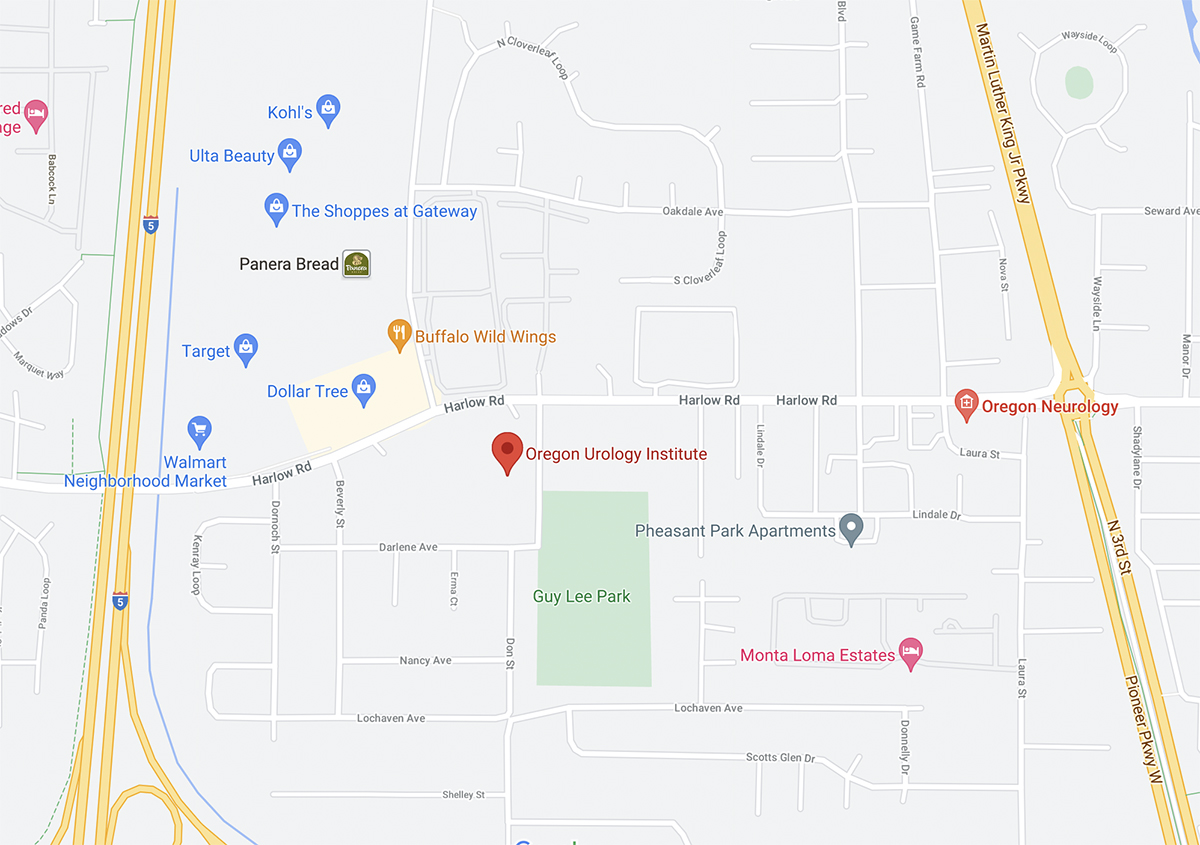
WHAT IS PROSTATE CANCER?
Prostate cancer is initially confined to the prostate gland, where it may not cause serious harm. However, while many forms of this cancer grow slowly and may need minimal or even no treatment, other types can be aggressive and spread quickly.


PROSTATE CANCER CAUSES AND RISK FACTORS
- Age: The risk of cancer increases with age, especially after the age of 50.
- Family history: Having a brother or father with this type of cancer more than doubles a man’s risk of developing this disease.
- Obesity: Men diagnosed with prostate cancer and carrying extra weight may be more likely to have an advanced or aggressive disease that’s more difficult to treat.
SYMPTOMS
- Difficulty urinating, including a weak or interrupted flow of urine
- Frequent urges to urinate, especially at night
- Blood in urine or semen
- Erectile dysfunction
- Pain in the hips, spine, ribs, or other areas if cancer spreads to your bones
- Weakness or numbness in the legs or feet
These symptoms are not specific to prostate cancer, which means other health conditions, like benign prostatic hypertrophy (BPH), could be causing them.
DIAGNOSIS
- Digital Rectal Examination (DRE): A doctor manually feels for abnormalities of the prostate by inserting a gloved and lubricated finger into the rectum. Because the prostate is adjacent to the rectum’s wall, the doctor can physically examine it. They feel for changes in size and texture, as well as lumps, nodules, or other abnormalities.
- Prostate-Specific Antigen (PSA) Test: This simple blood test measures the levels of PSA circulating in the body. High levels can be a clue that prostate cancer is present. However, multiple conditions can lead to an increased PSA, so further diagnostics are needed to determine the cause.
If your doctor is suspicious that you may have this type of cancer, they will recommend more tests. Imaging tests, like MRI, ultrasound, or CT, can help highlight areas of concern.
A prostate biopsy is the only way to diagnose prostate cancer officially. A small tissue sample is collected from the prostate and examined under the microscope. The sample can also be used to grade the cancer if it is present.
STAGES OF PROSTATE CANCER
Cancer stage is based on several factors, including:
- Tumor size
- Number of tumors
- Whether the cancer has spread (metastasized) to nearby tissues, organs, or distant parts of the body
For prostate cancer, staging is crucial as it influences treatment decisions and helps predict the patient’s prognosis.
Stage 1
Cancer is confined to a small area of the prostate. It’s likely you won’t have any Stage 1 symptoms. At this stage, the cancer may not be detectable by a digital rectal exam (DRE) and is often found with PSA tests during cancer screening.
Stage 2
In stage 2, the cancer is more advanced than in stage 1 but has not spread outside the prostate. Stage 2 is divided into two groups, based on how many sides of the prostate are affected and whether the cancer can be felt during a DRE or seen with imaging such as ultrasound. Symptoms may still be minimal or non-existent in stage 2.
- Stage 2A: The cancer is found in one-half or less of one side of the prostate.
- Stage 2B: The cancer is found in more than half of one side of the prostate or on both sides but is still confined to the prostate.
Stage 3
Stage 3 indicates that the cancer has spread beyond the outer layer of the prostate into nearby tissues. Symptoms may become more noticeable at this stage, including urinary problems and pain in the pelvic area. It is divided into two categories:
- Stage 3A: The cancer has extended outside the prostate but has not reached the bladder or rectum. It may involve the seminal vesicles but not the lymph nodes.
- Stage 3B: The cancer has spread to nearby organs, such as the bladder or rectum, or it involves nearby muscles or the pelvic wall.
Stage 4
Stage 4 marks the most advanced stage of the disease, indicating that the cancer has spread beyond the prostate gland to other areas of the body. This stage is characterized by significant spread, which may involve nearby organs such as the bladder or rectum, distant lymph nodes, bones, lungs, or liver. At this stage, the cancer is considered metastatic and poses considerable treatment challenges.
Symptoms of stage 4 can be more pronounced and may include:
- Significant urinary issues
- Weight loss
- Pain in the hips, back, chest, or other areas from bone metastasis
- Fatigue
- Decreased mobility or function due to cancer spread
PROSTATE CANCER TREATMENTS
- Watchful waiting and active surveillance: This approach involves closely monitoring the progression of cancer without immediate intervention and is ideal for men with low-risk, slow-growing tumors.
- Radiation therapy: This treatment utilizes high-energy rays or particles to destroy cancer cells, such as external beam radiation therapy and brachytherapy, where radioactive seeds are placed inside the prostate.
- Hormone therapy: Also known as androgen deprivation therapy, this treatment aims to reduce or block the production of male hormones that fuel prostate cancer growth. The result is a slowing or stopping of tumor progression.
- Chemotherapy: Cytotoxic drugs are used to damage cells or cause them to die. These drugs target and eliminate rapidly dividing cells, including cancer cells, and are often recommended when the cancer has spread to distant sites.
- Targeted therapy: This treatment uses drugs based on the cancer’s specific genes and proteins and is designed to specifically attack cancer cells while doing minimal damage to normal cells.
- Immunotherapy: Immunotherapy boosts the body’s natural defenses to fight the cancer. Materials made by the body or in a laboratory are employed to improve or restore immune system function.
- Cryotherapy: Also known as cryosurgery, this procedure uses extreme cold to freeze and destroy cancer cells.
- High-intensity focused ultrasound (HIFU): This treatment applies high-frequency ultrasound waves to generate heat, precisely targeting and killing cancer cells within the prostate.
SURGERY
A radical prostatectomy involves the removal of the prostate gland along with some of the surrounding tissue. Advances in surgical techniques, especially robotic-assisted surgery, have improved outcomes and reduced recovery times.
FAQs
How to check for prostate cancer at home?
While there’s no way to diagnose prostate cancer from home, cancer screening can begin with a prostate-specific antigen (PSA) blood test. If PSA levels are high, your doctor may want to investigate further. But if you have any concerns, don’t hesitate to reach out to your doctor, especially if you’ve noticed any discomfort or changes in your urinary habits, which could be important to look into.
How common is prostate cancer?
Prostate cancer is one of the most common types of cancer among men, especially as they get older. According to the CDC, 13 out of every 100 American men will get this type of cancer during their lifetime.
How is prostate cancer diagnosed?
Diagnosis typically involves a combination of tests, including a PSA blood test, DRE, and possible biopsies or imaging tests to confirm the presence of cancer and its stage.






